Hyundai Reveals Almost Everything on Its 2022 Santa Cruz Pickup: Size, Power, Towing

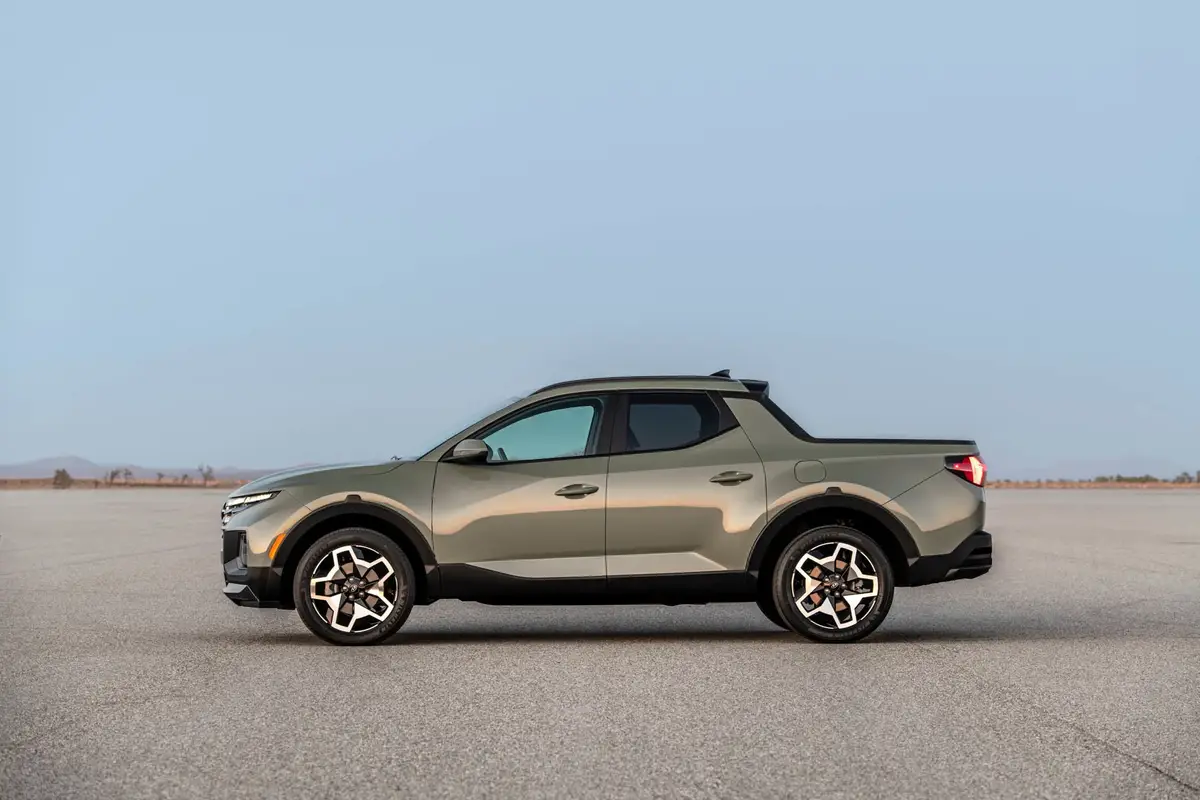
Competes with: Nissan Frontier, Toyota Tacoma, Honda Ridgeline, upcoming Ford Maverick?
Looks like: A beefy Hyundai Tucson with a pickup truck bed
Powertrains: 190-horsepower (estimate), 2.5-liter four-cylinder with eight-speed automatic transmission or 275-hp (estimate), 2.5-liter four-cylinder engine with eight-speed dual-clutch automatic transmission; front- or all-wheel drive
Hits dealerships: Summer 2021
Hyundai has teased us with its idea of a pickup truck for years with concepts, hints and rumors flying as it eyed entering one of the most popular global vehicle classes. And now, Hyundai has finally shown us that it’s ready to take the plunge by unveiling the production version of the 2022 Hyundai Santa Cruz “sport activity vehicle.” Hyundai doesn’t actually call it a pickup, referring to it as a “segment-busting sport activity vehicle.” It’s a small compact pickup based on the same stuff that forms the bones of the latest Hyundai Tucson SUV, regardless of what Hyundai would like to label it.

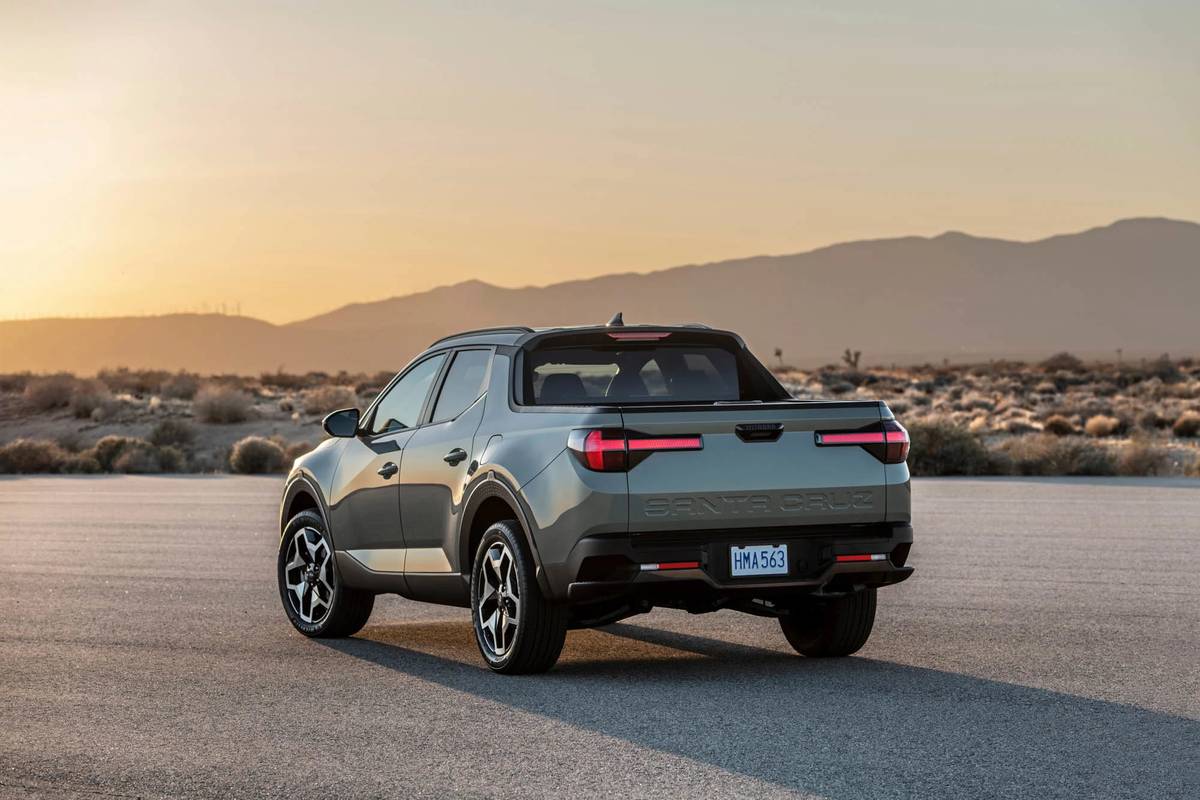








Exterior
The look of the new Santa Cruz closely follows the new Hyundai Tucson, with its bold matrix-style grille that features integrated running and headlights that only become visible once illuminated. The lower bumper features the styling of a skid plate, while big, muscular fenders cover standard 18-inch or optional 20-inch wheels with armorlike arch cladding. The bed is integrated into the rest of the body and features a lockable rolling tonneau cover, locking in-bed storage and integrated corner bumper steps. The taillights are embossed with a “Designed in California” label as a testament to Hyundai’s West Coast design center’s involvement.
But just how big is it? People expecting a Honda Ridgeline competitor are going to be disappointed, as the Santa Cruz is decidedly smaller than any of the other mid-size pickups in just about every dimension. It’s 10 inches shorter than a current-generation Nissan Frontier and nearly 15 inches shorter than a Ridgeline. The wheelbase is nearly 7 inches shorter than a Ridgeline, and it’s lower as well. Within Hyundai’s lineup, the Santa Cruz is about a half-inch shorter than a Hyundai Palisade three-row SUV (195.7 inches versus 196.1 inches), with a 4-inch longer wheelbase (118.3 inches versus 114.2 inches), and it is as wide as a Hyundai Santa Fe two-row SUV (75 inches versus 74.8 inches).
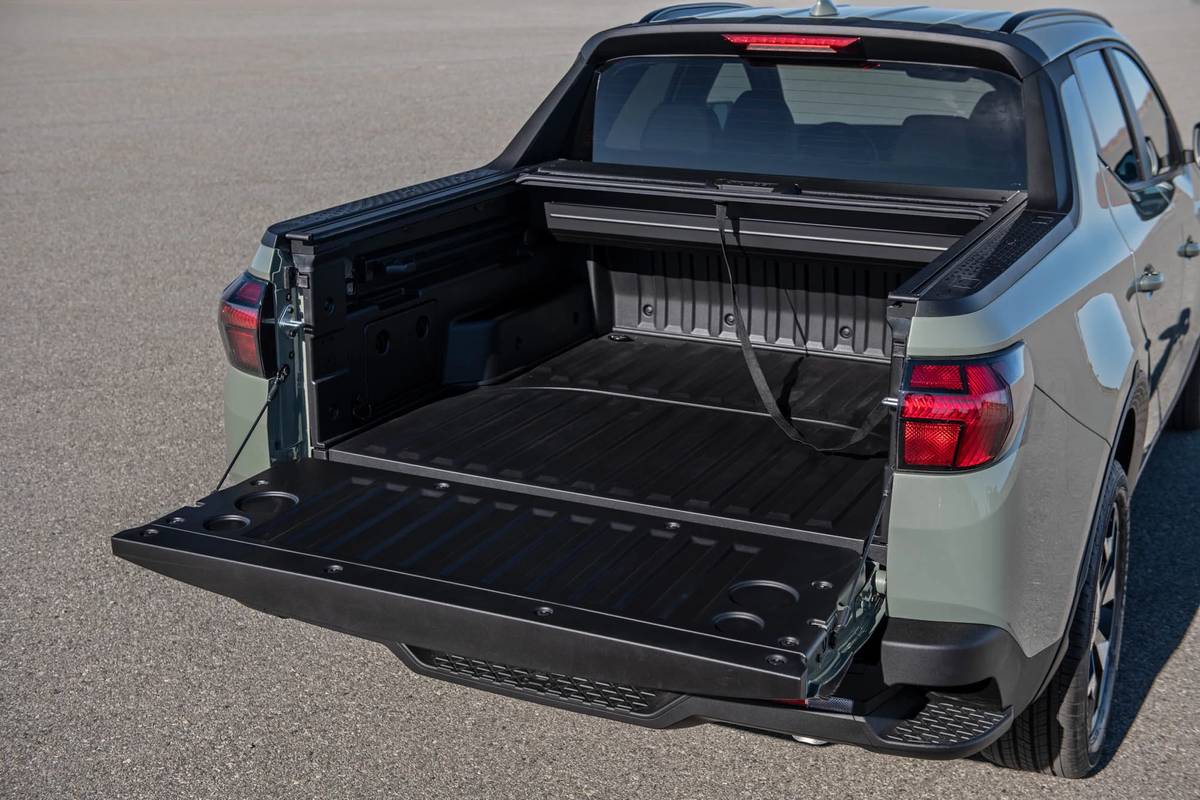





The Santa Cruz’s bed size is on the small side as well and is not uniformly shaped. Hyundai gives the length as 48.4 inches long for the “upper part of the bed” and 52.1 inches long for the “lower part of the bed.” Basically, the locking roll-top tonneau stores against the upper part of the bed, making the bed volume a slightly irregular space. Hyundai confirmed with Cars.com that the overall length is 4.3 feet with the tailgate closed, 6.2 feet long with the tailgate open. It’s 4.5 feet wide with 3.55 feet of room between the wheel housings. The bed length is more than 11 inches shorter than a Ridgeline’s bed at its longest point and more than 7 inches shorter than the Frontier’s. You won’t be putting a dirtbike or an ATV in there, but the bed seems well suited to dirty or wet items that an owner wouldn’t want inside a carpeted SUV.
Power and Towing
The Santa Cruz will be powered by a choice of two four-cylinder engines. The base motor is a 2.5-liter four-cylinder engine making at least 190 horsepower (Hyundai’s power outputs are still estimates, the company says) mated to an eight-speed automatic transmission. The uprated optional engine is a turbocharged 2.5-liter four-cylinder pumping out at least 295 hp (estimated) and mated to an eight-speed dual-clutch automatic transmission. The platform is front-wheel drive with all-wheel drive as an option, available for both powertrains. But despite the Santa Cruz’s diminutive size, it will not be without capability: The base engine is rated to tow 3,500 pounds, while the turbo AWD model will be able to tow a surprising 5,000 pounds.
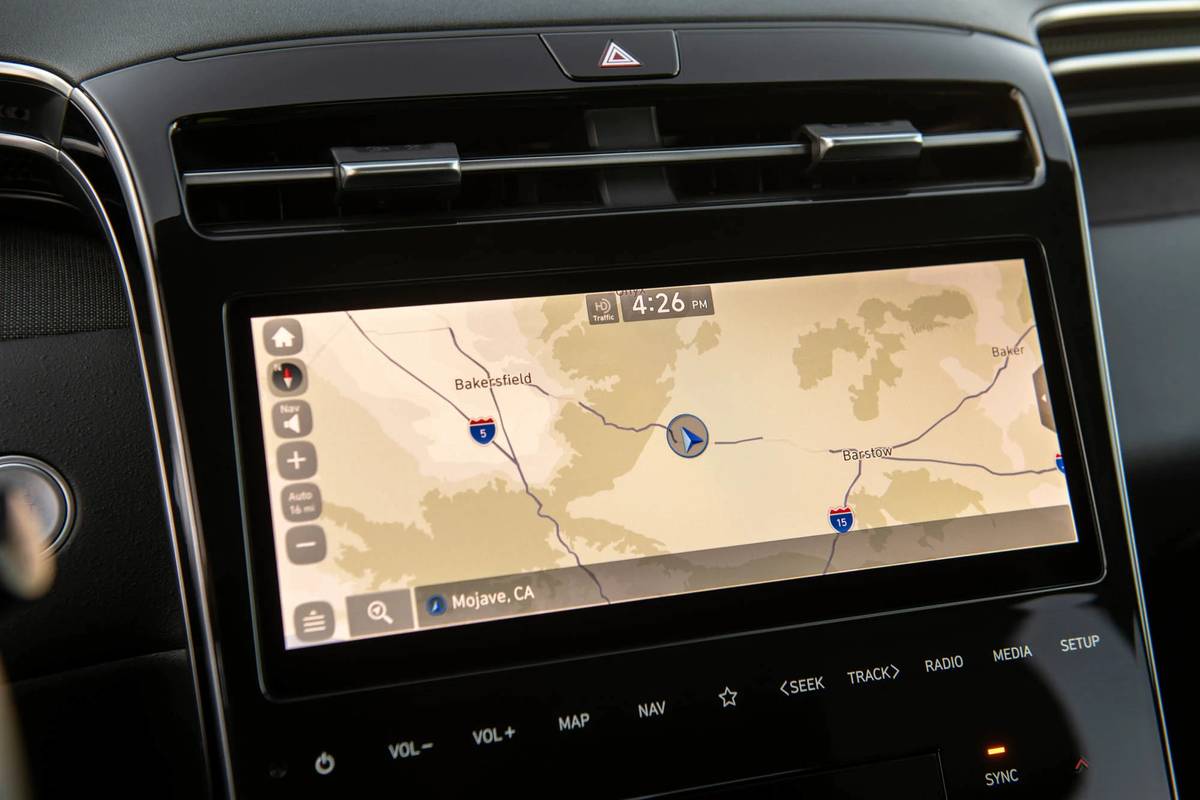
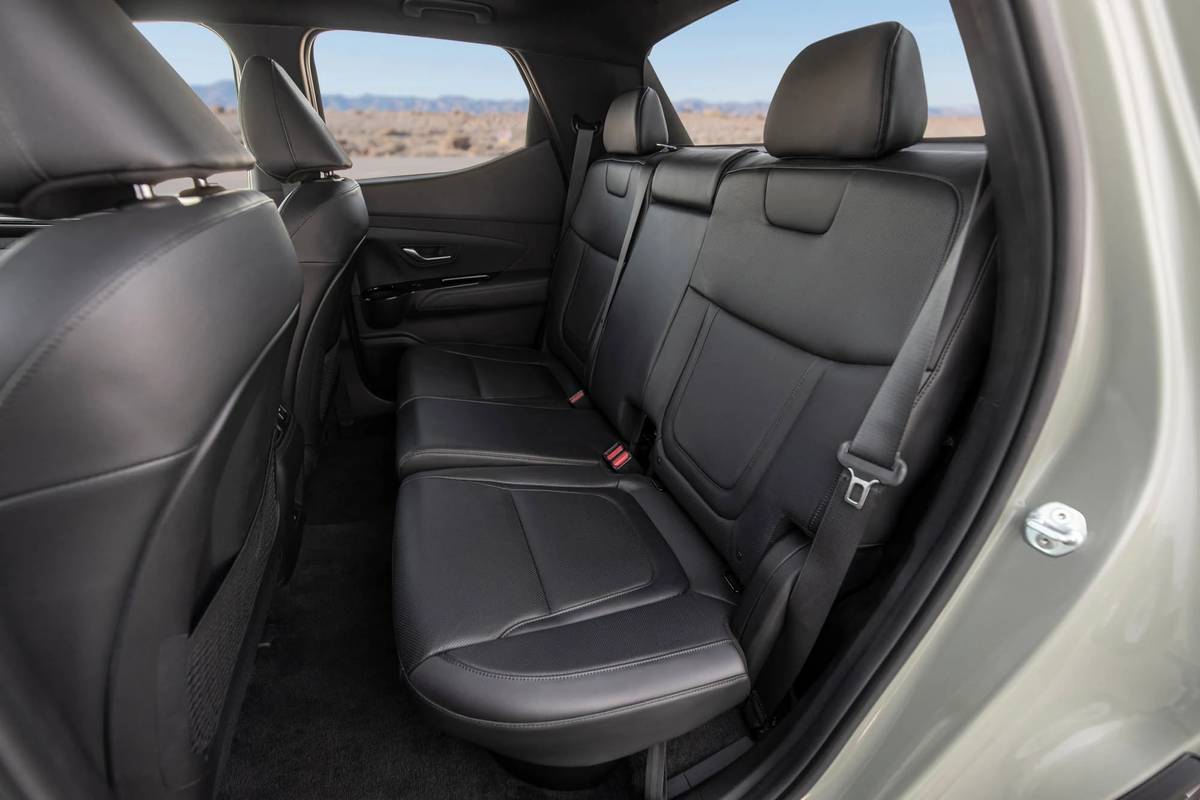
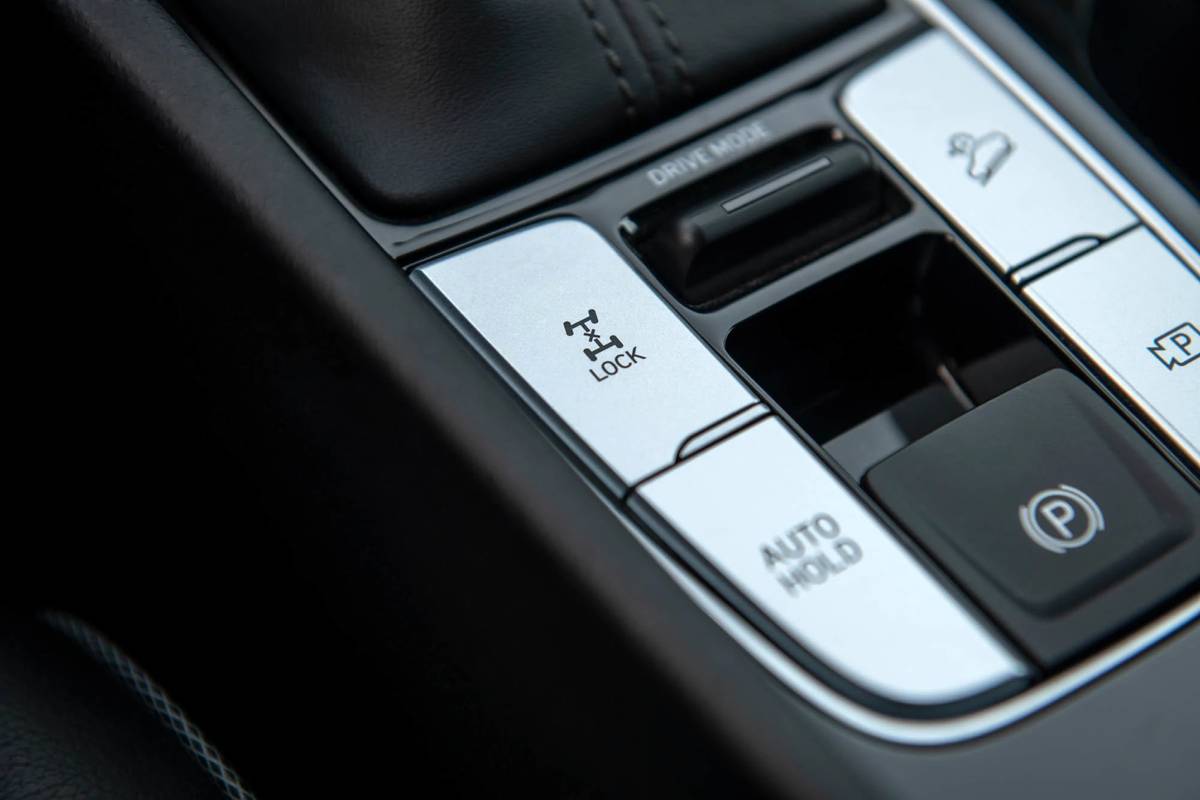
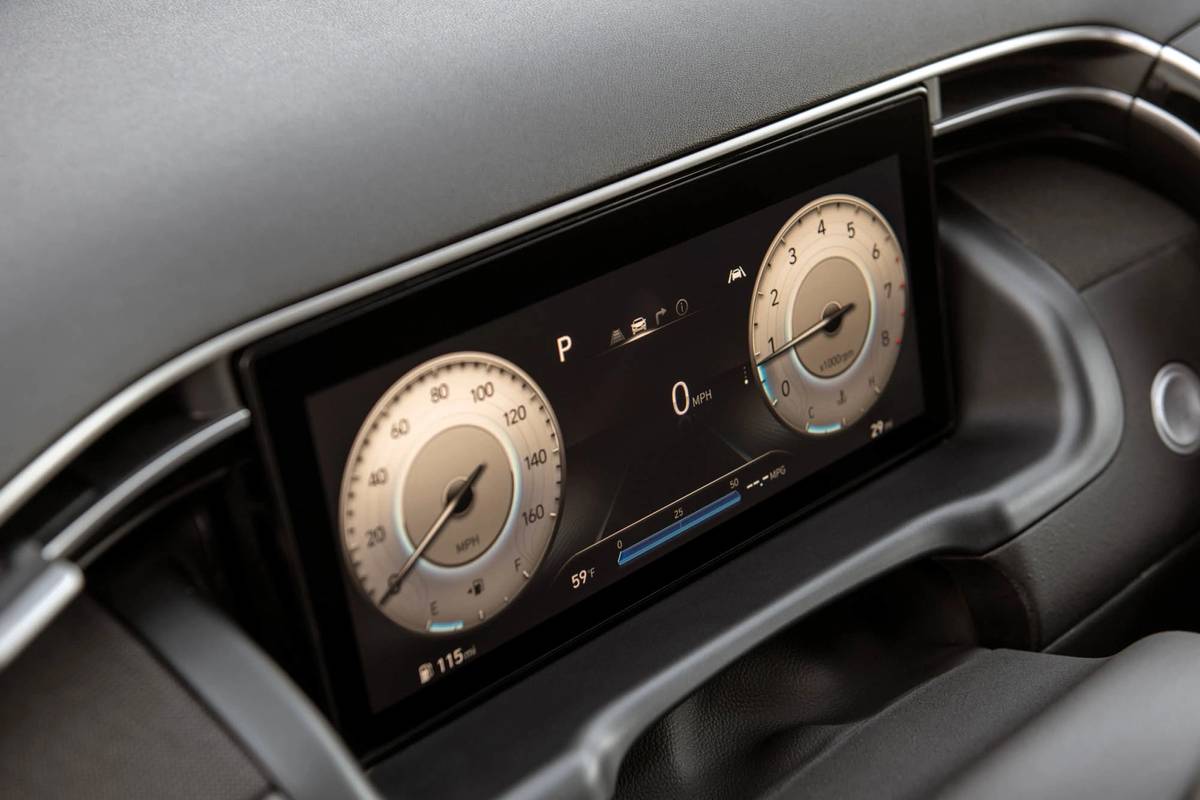
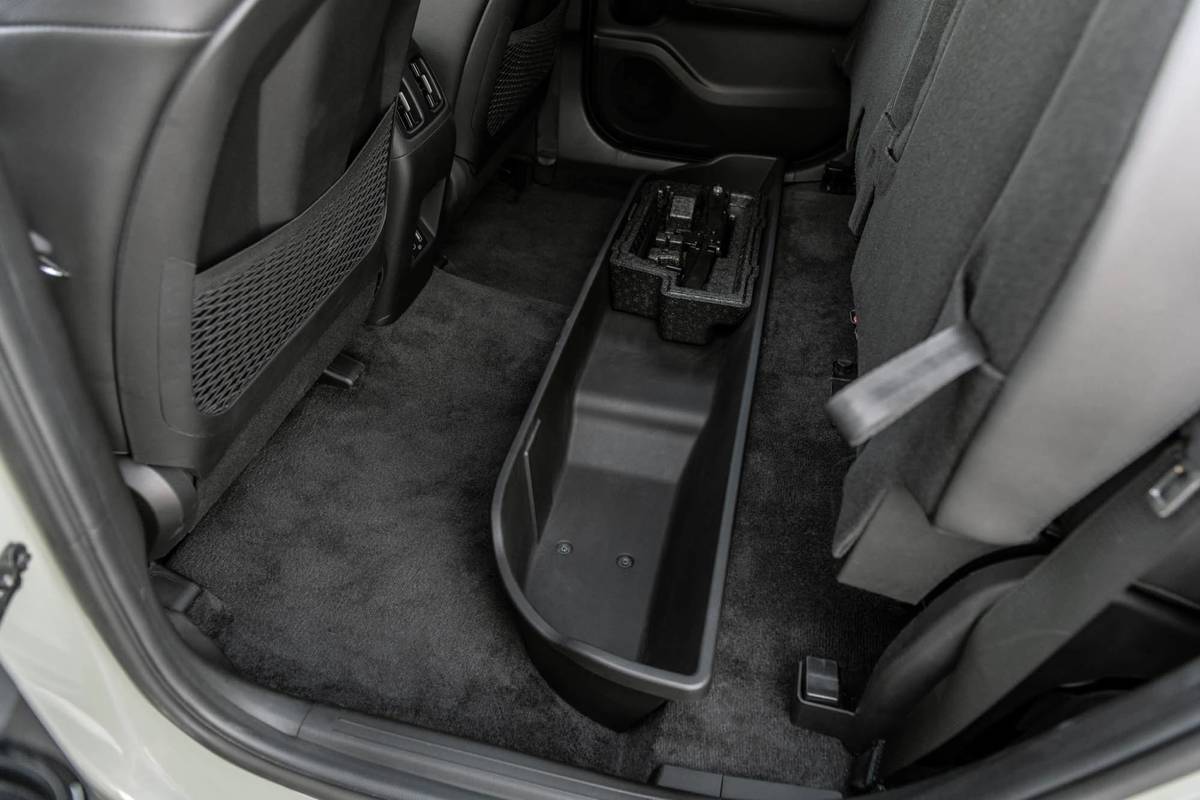
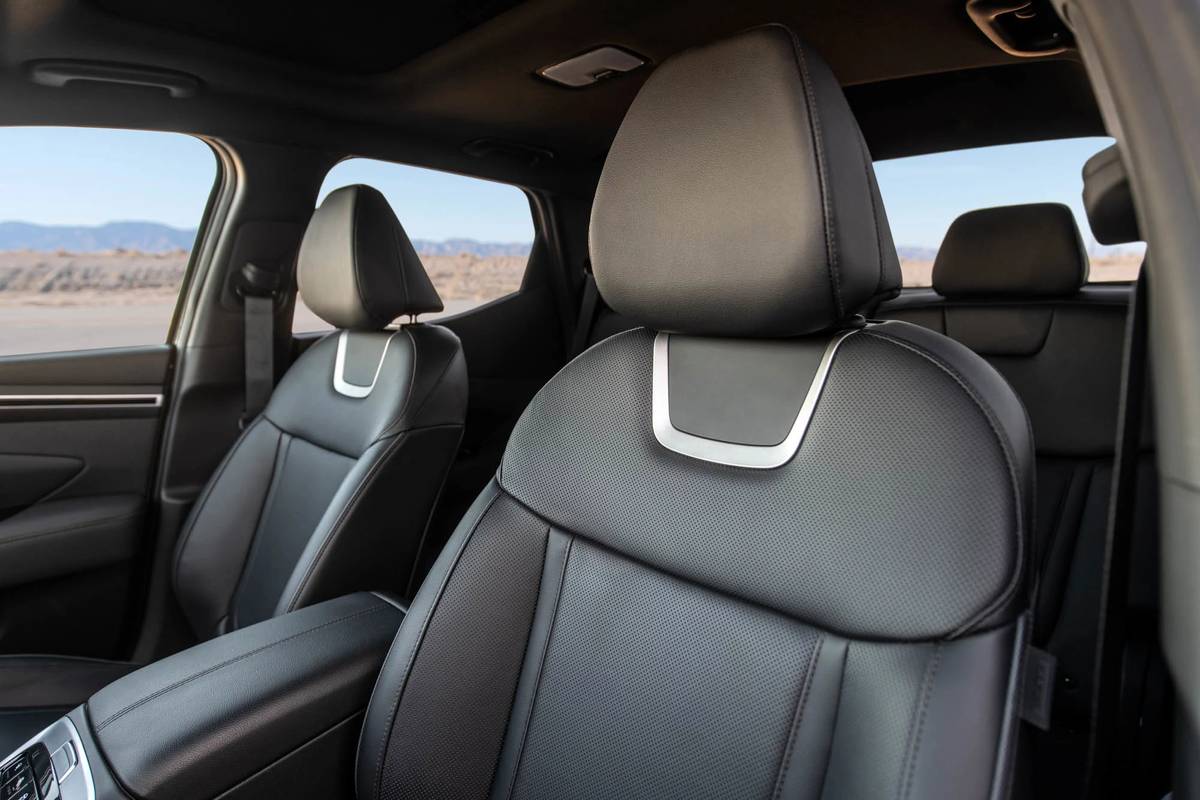






Interior
Many wondered if the Santa Cruz’ bed would be accessible from the cabin, in a setup similar to the now-defunct Chevrolet Avalanche’s “mid-gate,” but this appears to not be the case. The two areas are separated, with the Santa Cruz featuring a tight-looking crew-cab five-passenger setup only. The “dual-cockpit” style interior is similar to the new 2022 Tucson as well, sharing most of the instrument panel, switches, equipment and multimedia technology. That means a mix of touch-sensitive panels for multimedia and climate control, and real switches for things like the differential lock and drive modes. Absent is a volume control knob, as the new optional 10-inch “edgeless” Hyundai multimedia system goes to a touch-sensitive slider with a 10-inch digital gauge display an option behind the steering wheel. An 8-inch touchscreen is standard on the Santa Cruz, while a Bose premium audio system is available for people who want tunes with more punch. Wireless Apple CarPlay and Android Auto are an option, while a digital key function can be had — but only with Android phones. Hyundai’s Blue Link connectivity suite is standard and comes with three years of free membership, allowing remote lock/unlock, remote start and other features using any smartphone with Hyundais’ app, a Hyundai web portal or Amazon Alexa.
Related Video: 2022 Hyundai Santa Cruz: First Look
Safety
The Hyundai SmartSense suite of driver assistance and safety systems will be standard on the new Santa Cruz, bringing items like forward collision warning with pedestrian and cyclist detection, automatic emergency braking, lane keep assist and driver attention monitor to all models. Optional equipment includes blind spot collision avoidance assist, safe exit assist, blind spot monitor, highway drive assist, smart cruise control, surround view monitor and rear cross-traffic collision avoidance assist.
Release Date
No pricing is yet available for the new 2022 Santa Cruz, but the new vehicle is expected to start production at Hyundai’s factory in Alabama in June, with models expected to show up in dealers later this summer.
More From Cars.com:
Cars.com’s Editorial department is your source for automotive news and reviews. In line with Cars.com’s long-standing ethics policy, editors and reviewers don’t accept gifts or free trips from automakers. The Editorial department is independent of Cars.com’s advertising, sales and sponsored content departments.

Detroit Bureau Chief Aaron Bragman has had over 25 years of experience in the auto industry as a journalist, analyst, purchasing agent and program manager. Bragman grew up around his father’s classic Triumph sports cars (which were all sold and gone when he turned 16, much to his frustration) and comes from a Detroit family where cars put food on tables as much as smiles on faces. Today, he’s a member of the Automotive Press Association and the Midwest Automotive Media Association. His pronouns are he/him, but his adjectives are fat/sassy.
Featured stories








